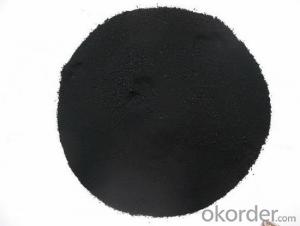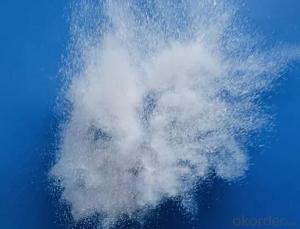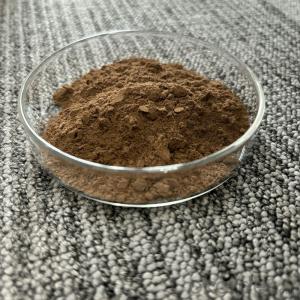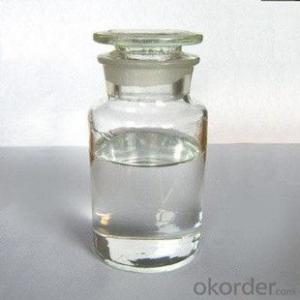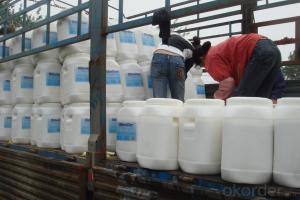Carbon Black N220 N330 N550 N660 for granule application
- Loading Port:
- Qingdao
- Payment Terms:
- TT OR LC
- Min Order Qty:
- -
- Supply Capability:
- 20000 m.t./month
OKorder Service Pledge
OKorder Financial Service
You Might Also Like
Specifications
Carbon Black N220 N330 N550 N660
1.competitive price
2.high quality
3.wide specifications
4.personalized services
used in plastic,rubber,masterbatch,tire,paints,ink,pigments
Carbonblack N220,N330,N339,N375,N550,N660,N774 etc......
Carbon black
CAS.NO.:1333-86-4
Molecular Formula:C
Molecular weight:12.01
Appearance Black power or granular Specification
Name ,Parameter
Carbon black N220
Carbon black N330
Carbon black N550
Carbon black N660
Loding Absorption Number(g/Kg)
114-128
77-87
39-47
32-40
Absorption Value of DBP (10-5m3/Kg)
109-119
97-107
116-126
85-95
Absorption Value of compressing sample DBP (10-5m3/Kg)
95-105
83-93
83-93
71-79
Adsorptive Specific Surface Area of CATB ( 103m2/Kg)
106-116
77-87
38-46
32-40
Adsorptive Specific Surface Area of Nitrogen (103m2/Kg)
114-124
78-88
38-46
30-40
Tinting Strength %
110-120
98-108
----
----
Heating Loss
2.5%max
2.5%max
1.5%max
1.5%max
Ash Content
0.5%max
0.5%max
0.5%max
0.5%max
Tensile Strength
-0.5mpa min
-0.5mpa min
-0.5mpa min
-0.5mpa min
300% Extending Stress
-1.5±1.0 mpa
-1.0±1.0 mpa
-1.0±1.0 mpa
-2.5±1.0 mpa
45μm Sieve Residue
0.10% max
0.10% max
0.10% max
0.10% max
Packing:25 kgs in net bag, 14 tons in the 20'FCL.
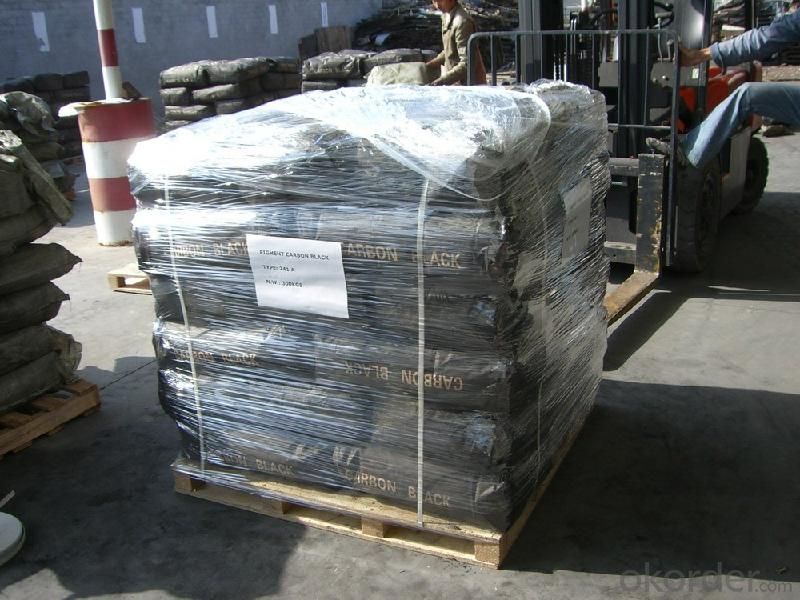
Specifications
Carbon Black N220 N330 N550 N660
1.competitive price
2.high quality
3.wide specifications
4.personalized services
Carbonblack N220,N330,N339,N375,N550,N660,N774 etc......
CAS.NO.:1333-86-4
Molecular Formula:C
Molecular weight:12.01
Appearance Black power or granular
Specification
Name ,Parameter | Carbon black N220 | Carbon black N330 | Carbon black N550 | Carbon black N660 |
Loding Absorption Number(g/Kg) | 114-128 | 77-87 | 39-47 | 32-40 |
Absorption Value of DBP (10-5m3/Kg) | 109-119 | 97-107 | 116-126 | 85-95 |
Absorption Value of compressing sample DBP (10-5m3/Kg) | 95-105 | 83-93 | 83-93 | 71-79 |
Adsorptive Specific Surface Area of CATB ( 103m2/Kg) | 106-116 | 77-87 | 38-46 | 32-40 |
Adsorptive Specific Surface Area of Nitrogen (103m2/Kg) | 114-124 | 78-88 | 38-46 | 30-40 |
Tinting Strength % | 110-120 | 98-108 | ---- | ---- |
Heating Loss | 2.5%max | 2.5%max | 1.5%max | 1.5%max |
Ash Content | 0.5%max | 0.5%max | 0.5%max | 0.5%max |
Tensile Strength | -0.5mpa min | -0.5mpa min | -0.5mpa min | -0.5mpa min |
300% Extending Stress | -1.5±1.0 mpa | -1.0±1.0 mpa | -1.0±1.0 mpa | -2.5±1.0 mpa |
45μm Sieve Residue | 0.10% max | 0.10% max | 0.10% max | 0.10% max |
Packing:25 kgs in net bag, 14 tons in the 20'FCL.

- Q:Does the nature and quality of the catalyst itself change before and after the chemical reaction?
- Will not change! In fact, the catalyst in the chemical reaction is to participate in the reaction, but in the reaction it not only participate in the reaction, but also generated, and the amount of reaction and the amount of equal, the total amount of the same, this process is more complex, But sometimes the problem will appear, but the information will be very clear, will not affect the problem!
- Q:Are the catalysts for upgrading the weapons components that i may have a few of, or very rare ones?
- Catalysts can only be used when the item is ready to evolve. On top of that you can't use a different kind of catalyst than the one actually require and you can't use too many or too few. Catalysts are basically automatic as long as you have enough, all you can do is choose to use them. On the other hand, you CAN accidentally use sells for a premium as a material. Those items are universally horrible as a material, but sell really well in the shop. Don't use them by accident, sell them as soon as you can.
- Q:What is the principle of the catalyst? Why can change the rate of chemical reactions and their own without any change
- The principle of the catalyst: the catalyst is mainly by reducing the activation energy, so that the reaction is easy to carry out, so as to achieve the catalytic effect.
- Q:How are the 4 characteristics of a catalyst (1. organic or inorganic 2. reusable 3. Highly specific, and 4. lowers activation energy) important in preforming life functions? please be as specific as possible, i understand that these are characteristic, i just don't understand why they're beneficial, other than the reusable and lowers activation energy one.
- Organic or Inorganic - the catalyst (enzyme) must be organic to be found in the cell. Catalysts speed up chemical reactions inside a cell and must therefore be organic to be a functioning part of the cell. Reusable - There are so many reactions that catalysts are involved in that it would be a waste for the cell if a catalyst could only last one reaction, especially if there are inhibitors and competition for the active site. Catalysts must be reusable in order to keep the cell functioning. Catalysts always remain unchanged after a reaction. HIihly Specific - Catalysts are only made to catalyze one specific chemical reaction. Their active site has proteins bonded in such a way that only certain elements can enter the active site and H bond with those proteins. The fact that they are highly specific maximizes the productiveness of the cell. And it ensures that the cell only has catalysts to reactions that it needs to be completed. It also ensures that the elements are correctly bonded with eachother. If any two elements could enter the active site, there is no guarantee that the correct product will be produced. Catalysts and Enzymes must be super highly specific in order to properly function. Lowers Activation Energy - The more energy a cell has to spend to catalye a reaction, the worse it is for the cell and the less ATP is has for other reactions. Catalyts hold the substrates together so there is less energy that is needed to have the two substrates react with eachother. Activation Energy is the energy that is needed to start a reaction. So the less energy used by the cell for reactions, the better for the cell. Hope this helps
- Q:Co and No form a chemical equation for Co2 and No2 under the action of a catalyst
- 2CO + 2NO == N2 + 2CO2
- Q:The future direction of employment how, in what kind of units to do what work, how the closure rate? The
- Generally in the chemical plant to do engineering design engineers, the past few years, science and engineering graduates generally do not worry about work.
- Q:Does the catalyst slow down the chemical reaction rate? Still can only accelerate
- As far as I know, depending on the definition of the catalyst to reduce the activation energy can only accelerate the reaction rate. However, some substances can reduce the rate of reaction, for example, to dilute the reaction solution to slow down the reaction rate, but slow down the general mention of the catalyst.
- Q:and can you give me an example of it .. please give it in easy terms if you can. thanks
- A okorder /... hope this helps!!
- Q:What is the difference between a catalyst and an oxidizing agent?
- A catalyst alters the rate of a reaction without being used up in the reaction. An oxidising agent oxidises other compounds, the agent itself being reduced in the process.
- Q:The concept of catalyst in high school chemistry
- The catalyst is selective, that is, a catalyst that catalyzes only one or more chemical reactions and does not catalyze all chemical reactions. However, a chemical reaction of the catalyst may be a variety of, such as hydrogen peroxide to produce oxygen in the reaction, in addition to the use of manganese dioxide as a catalyst, you can also use copper oxide, iron oxide as a catalyst. Building on the use of cement, red brick powder also catalyze the decomposition of hydrogen peroxide.
1. Manufacturer Overview |
|
|---|---|
| Location | |
| Year Established | |
| Annual Output Value | |
| Main Markets | |
| Company Certifications | |
2. Manufacturer Certificates |
|
|---|---|
| a) Certification Name | |
| Range | |
| Reference | |
| Validity Period | |
3. Manufacturer Capability |
|
|---|---|
| a)Trade Capacity | |
| Nearest Port | |
| Export Percentage | |
| No.of Employees in Trade Department | |
| Language Spoken: | |
| b)Factory Information | |
| Factory Size: | |
| No. of Production Lines | |
| Contract Manufacturing | |
| Product Price Range | |
Send your message to us
Carbon Black N220 N330 N550 N660 for granule application
- Loading Port:
- Qingdao
- Payment Terms:
- TT OR LC
- Min Order Qty:
- -
- Supply Capability:
- 20000 m.t./month
OKorder Service Pledge
OKorder Financial Service
Similar products
New products
Hot products
Related keywords



